 Back to the Be Inspired Blog
Back to the Be Inspired Blog
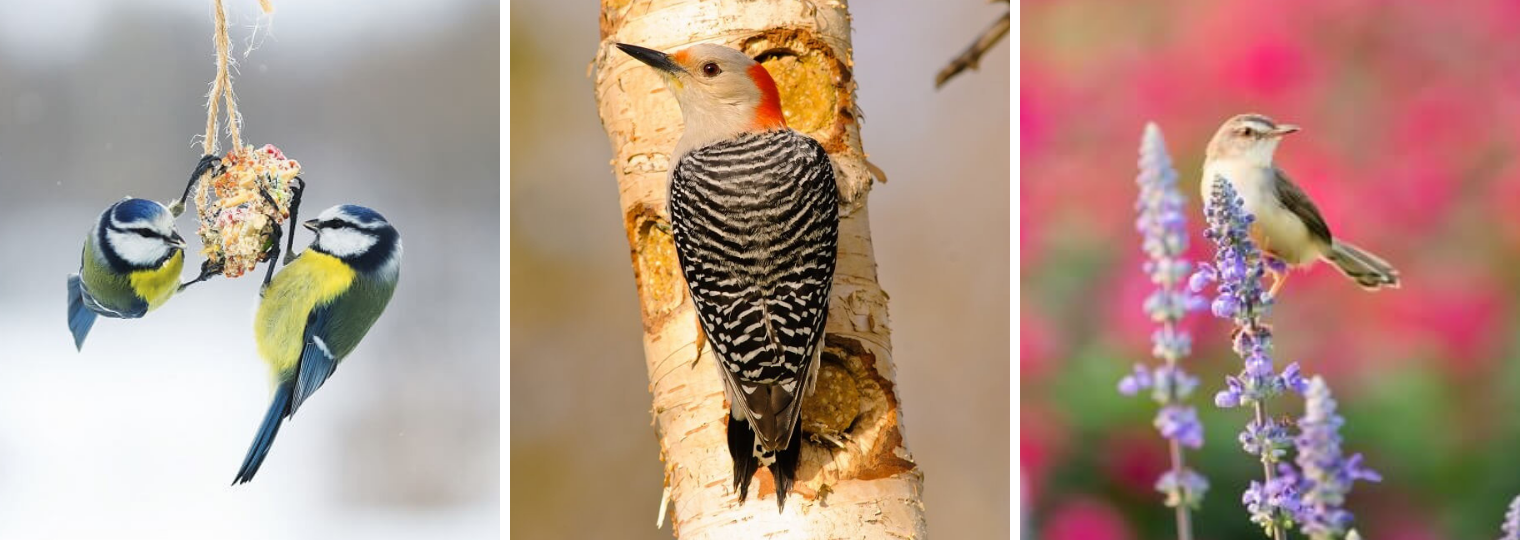
Attracting Birds Is Beneficial To Your Yard, And Their Survival
If you were to step outside into your yard right now and close your eyes, what would you hear? Traffic, maybe, or the bark of a nearby dog, and almost certainly a gentle chorus of birds. These winged citizens of your neighborhood are so prevalent that they’re easy to overlook unless you take the time to pick them out, but their contribution to the local ecosystem is invaluable.
Why Attracting Birds Is Important For The Health Of Your Yard
Your backyard birds do a lot more than you probably realize, and you can boost those benefits by taking steps to make your green spaces more bird-friendly. Here are just a few of the many benefits you can reap when attracting birds to your yard.
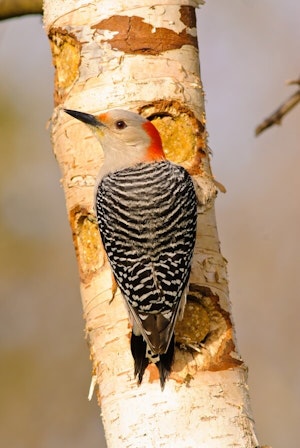 Pest Control.
Pest Control.
In addition to a hearty diet of seeds and nuts, birds eat a wide variety of insects that may not be welcome in a yard or garden. Aphids, mosquitoes, spiders, earwigs, beetles, moths and more are natural food sources for birds. Encouraging birds to be in your garden can help reduce, or even remove, the need to use harsh chemicals.
Flower Pollination.
Hummingbirds, orioles and other birds that sip nectar are efficient pollinators of garden flowers. Other birds will naturally spread pollen as they move between trees and bushes.
Weed Control.
Finches, towhees and sparrows love to eat weed seeds, making them effective landscaping assistants to help control unwanted plants. Attracting birds like these can be as simple as planting seed-bearing flowers; this can also give them a natural food source to enjoy and reduce how often you you’ll need to refill your bird feeders.
Food Sharing.
Fruit trees like apples, peaches, plums and pears provide excellent foliage for nesting. Birds flying between trees will also help pollinate the fruit blossoms, giving your harvest a nice boost.
Environmental Conservation.
Planting a landscape that’s appealing to the local birds means making use of native plants and available resources in environmentally conscious ways. Native plants require less water and are more resistant to disease, making them better for the local ecosystem and requiring less work to maintain.
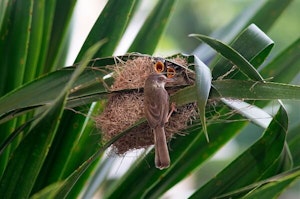
Wildlife Conservation.
As more natural habitats become threatened by urban development, attracting birds to your yard provides a critical oasis for both your local birds and migrating species. This helps preserve birds on both a local and national (or even global) scale.
Increased Property Values.
A home that is well-maintained with appropriate native landscaping that attracts birds has better curb appeal and is a good value for homeowners. This helps keep neighborhood home values rising and is a great investment for real estate sales.
Stress Relief.
Watching birds, interacting with them, listening to their songs and taking time to work outdoors improving their habitat can help relieve stress and promote well-being. Time outdoors also helps boost your vitamin D levels and encourages you to breathe fresh air.
What Are The Best Ways To Attract Birds To Your Yard?
You may have seen birds in and around your yard on their way to somewhere else, but how can you turn your yard from flyover zone to bird destination?
Landscape
 When designing a landscape to attract birds, it’s important to provide places where they can hide or take cover from the weather. During the spring and summer, birds also need nesting sites. Twiggy shrubs and small trees offer many appealing nesting options, but keep in mind that nesting birds means hungry mouths and parents who will need a strong source of food. Here are some great options to provide all of the above.
When designing a landscape to attract birds, it’s important to provide places where they can hide or take cover from the weather. During the spring and summer, birds also need nesting sites. Twiggy shrubs and small trees offer many appealing nesting options, but keep in mind that nesting birds means hungry mouths and parents who will need a strong source of food. Here are some great options to provide all of the above.
-
Conifers
Conifers provide cover, winter shelter and summer nesting sites. Some also provide sap, buds and seeds.
- Grasses and legumes
Grasses and legumes provide cover for ground-nesting birds if the area is not mowed during the nesting season. Some also provide seeds.
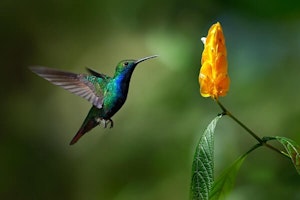
- Nectar-producing plants
These attract nectar-sipping birds like hummingbirds and orioles. Hummingbirds especially like tubular red flowers, such as fuchsia, bee balm, coral bells and penstemon.
- Summer-fruiting plants
These include cherry, honeysuckle, raspberry, serviceberry, grape and plum. They attract birds like brown thrashers, robins, thrushes, waxwings, woodpeckers, orioles, cardinals, towhees and grosbeaks.
- Fall-fruiting plants
These can include dogwoods, mountain ash, winterberries and cotoneasters. They are used by both migratory birds preparing to leave and non-migratory species preparing for winter.
- Nut and acorn plants.
These plants provide food and nesting habitat. They include oaks, hickories, buckeyes, chestnuts, butternuts and walnuts.
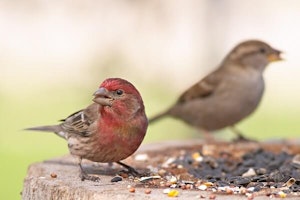 Hold off on cutting back flower beds until spring so goldfinches, titmice, doves, quail and other birds can shelter in them when searching for seeds and insects in winter. Instead of getting out the clippers every few months, learn to love the natural look of a free-form hedge. Birds will appreciate it, and you’ll appreciate the birds bringing life to your yard, every season of the year.
Hold off on cutting back flower beds until spring so goldfinches, titmice, doves, quail and other birds can shelter in them when searching for seeds and insects in winter. Instead of getting out the clippers every few months, learn to love the natural look of a free-form hedge. Birds will appreciate it, and you’ll appreciate the birds bringing life to your yard, every season of the year.
Water
Birds are attracted to water for drinking and bathing, especially if that water is moving. If you already have a birdbath, consider adding a bubbler to it. If you don’t, consider installing an outdoor fountain instead. A fountain will provide the attraction of moving water and add an appealing feature to your garden. Installing a small pond with a solar-powered fountain or a recirculating waterfall will draw birds in from blocks away.
Food
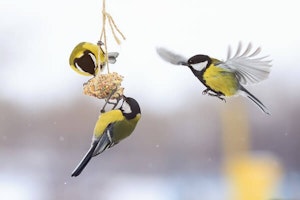 Providing food is incredibly important for attracting birds, especially as our climate continues to change. According to data compiled by the Audobon society, nearly 60 percent of the 305 widely distributed bird species found in North America during the winter have shifted their ranges northward by an average of 35 miles.
Providing food is incredibly important for attracting birds, especially as our climate continues to change. According to data compiled by the Audobon society, nearly 60 percent of the 305 widely distributed bird species found in North America during the winter have shifted their ranges northward by an average of 35 miles.
Each day birds spend between four and six hours scouring their natural habitat for food. During the winter, a night in the cold will drain their fat supplies – and about 10 percent of their body weight – trying to keep warm.
You can ease that challenge by providing both seed and suet feeders year-round, but especially during the colder parts of the year. If you have steady visitors, you may even begin to notice their patterns change depending on the weather. For instance, many species will feed intensely before bad weather rolls in.
A basic seed feeder is perfect, but if you have kids that you want to start introducing to wildlife, you can try making these cute suet feeders in your kitchen.
Materials:
- Muffin pan
- Cupcake liners
- 12 feet of natural twine
- 1 cup lard
- 2 cups wild bird food
Instructions:
- Poke a hole in the center of the bottom of 12 cupcake liners.
- Cut 12 pieces of twine into 12-inch lengths.
- Tie a knot at one end of one length of twine, and pull the other end through the hole in the bottom of a cupcake liner until the knot is at the base of the liner. Repeat for all cupcake liners.
- Place one cupcake liner in each section of the muffin tin.
- Melt the lard in a saucepan over low heat until it liquifies.
- Put the melted lard and the wild bird food in a mixing bowl, and then stir with a spoon until well combined.
- Spoon about 1/4 cup of the birdseed mixture into each of the prepared cupcake liners. Gently lift the twine so that it sticks out of the top of each cake.
- Refrigerate for at least one hour.
- Once the cakes are solid, remove them from the muffin pan and peel away the cupcake liner.
- Use the string to hang the feeder on low tree branches to feed birds.
- Place only a few cakes outside. Freeze the rest until you're ready to use them.
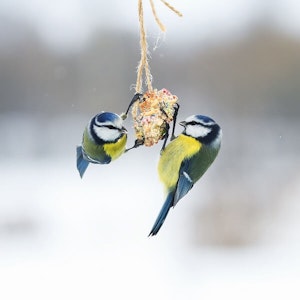 If you have both suet and seed feeders present, but neither are getting any steady traffic, you may need to consider relocating them to a different part of the yard. Birds need to feel safe in order to approach a feeder. While it may not be apparent to us, certain placements may represent a high-risk venture for a bird. For example, there may be a feral cat or hawk who has been staking out the feeder at certain parts of the day.
If you have both suet and seed feeders present, but neither are getting any steady traffic, you may need to consider relocating them to a different part of the yard. Birds need to feel safe in order to approach a feeder. While it may not be apparent to us, certain placements may represent a high-risk venture for a bird. For example, there may be a feral cat or hawk who has been staking out the feeder at certain parts of the day.
Experts recommend placing feeders at about 10 feet from the closest cover. This provides birds a nearby haven when startled and a place to use when approaching the feeder, from which they can scan for trouble. But it's also far enough away that cats and other ground predators lose the advantage of the sudden lunge.
Other considerations when placing a feeder are visibility (you do want to see the birds, don't you?), and convenience for refilling. If you make the location too hard to reach, it will be hard to stick with the routine over the long haul.
Talk To The Experts At SummerWinds About How To Attract Birds To Your Yard.
Come in to any one of our Bay Area locations and talk to our experts about how you can attract birds to your home. SummerWinds staff are knowledgeable about different feeders and seed mixers, as well as creating a bird-friendly landscape with native plants, water features and more!

